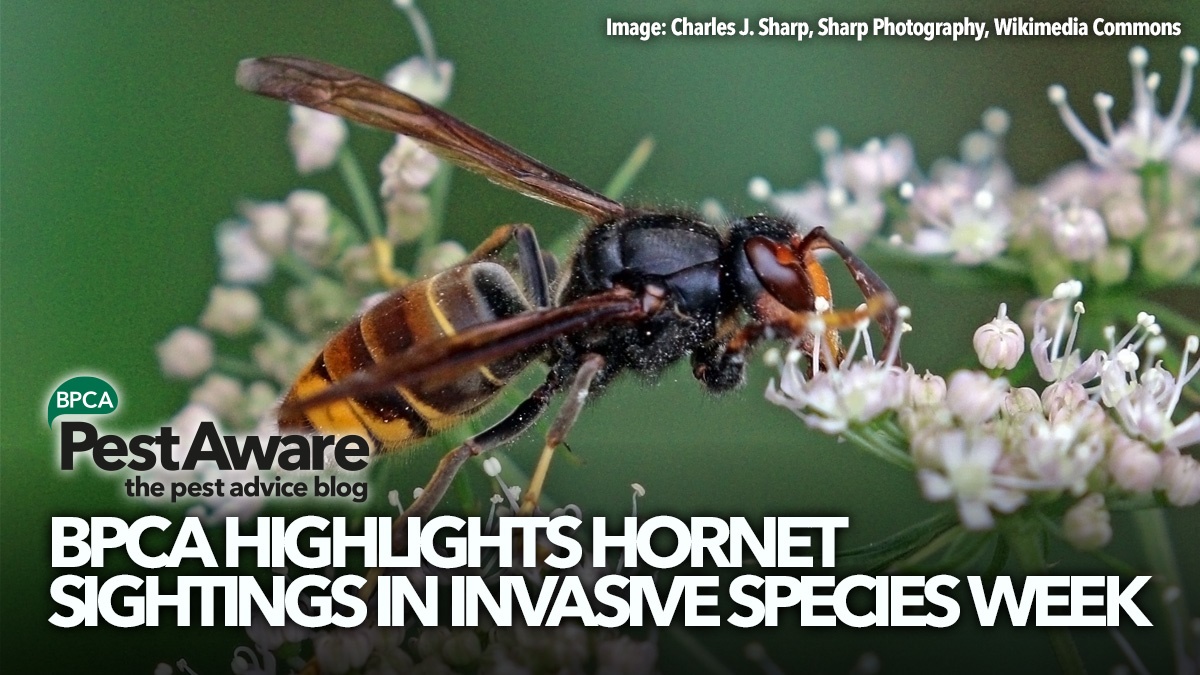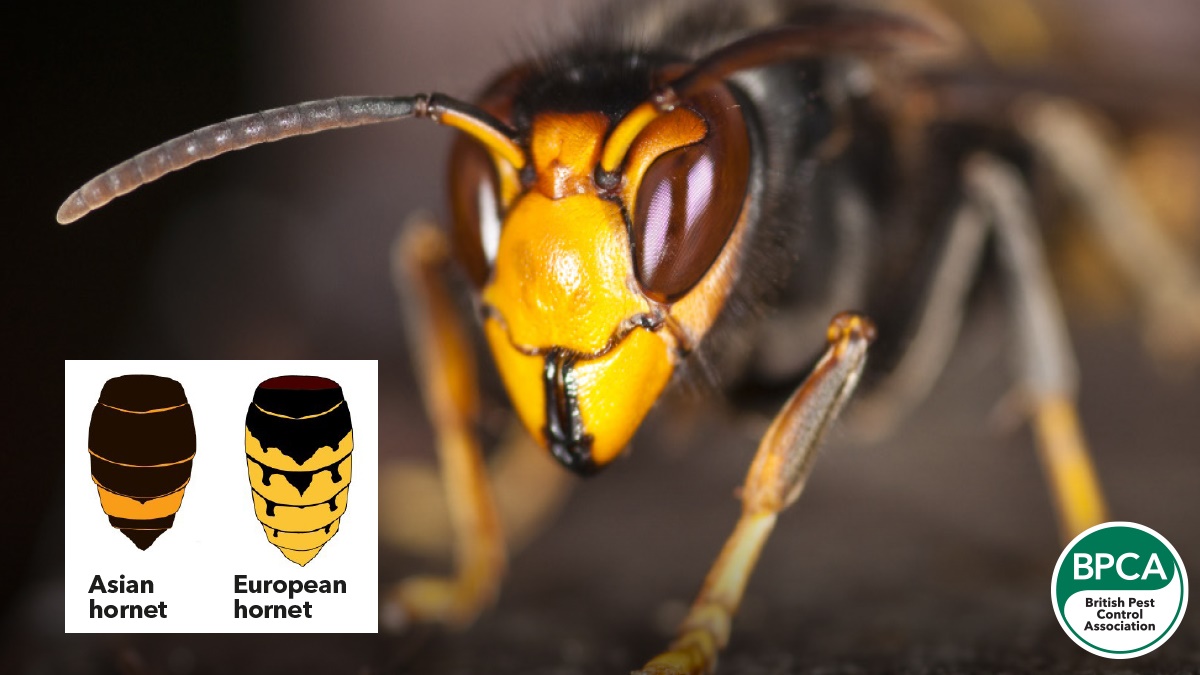PESTAWARE
Experts at British Pest Control Association (BPCA) are backing calls by the Non-Native Species Secretariat and the British Beekeepers Association for residents in Hampshire to report any sightings of Yellow-legged (Asian) hornets.

So far, 10 sightings of the invasive species have been recorded in 2025.
Formerly known as the Asian hornet, Yellow-legged hornets are a highly aggressive predator of native insects and pose a significant threat to honeybees and other pollinators in the UK.
BPCA is shining a spotlight on Yellow-legged hornets this Invasive Species Week (12 – 18 May) as work continues to prevent them becoming established in the UK.
Niall Gallagher is Technical Manager at BPCA. He said: “These invaders are a predator of honeybees and could disrupt our native eco-systems and impact crop production.
“Any sightings should be reported to the Non-Native Species Secretariat and we’d advise getting help from a member of the National Bee Unit or a member of the British Beekeepers Association.
“If you discover a European hornet nest, we always recommend seeking help from a BPCA member, especially if it is indoors, or in a difficult place to access.
“Anyone tempted to try a DIY treatment must be certain any product they choose is licensed for use in the UK and must always strictly adhere to the instructions on the label.”
The first confirmed sighting in 2025 was by a beekeeper in Oswestry, Shropshire, who found a single Yellow-legged hornet in imported shallots on January 23.
A dead hornet was found by a member of the public in Canterbury, Kent on March 17.
A hornet was found in a rotary washing line in Marchwood, Hampshire on April 8, with another flying into a conservatory in Deal, Kent on April 12.
Two sightings were reported in Kent on April 14 – one flying into a greenhouse in Appledore and another into a conservatory in Ramsgate.
An embryo nest – later destroyed – and a single hornet were discovered on a windowsill in Langley, Kent on April 16, with another at Hythe, Southampton, on April 17, when a Yellow-legged hornet was discovered trying to build a nest in a playhouse.
On April 19, a householder in Folkestone, Kent found a Yellow-legged hornet in their conservatory and on April 23, a local bee inspector found a Yellow-legged hornet in a National Bee Unit trap at Marchwood, Hampshire, just 200m away from the sighting on April 8.
A Yellow-legged hornet was spotted foraging in a garden in Sandwich, Kent on April 28, with another NBU trap capturing a hornet at Broad Oak, Kent the following day.
The most recent recorded sighting according to the National Bee Unit rolling database was on April 30, when a Yellow-legged hornet flew into a house in Nonington, Kent.

Niall added: “Since 2016 a number of sightings have been recorded in the UK, and anyone who thinks they’ve spotted a Yellow-legged hornet should report it as soon as possible.
“The Yellow-legged hornet is smaller than our native species. It has an orange head, and its entire body is almost entirely dark.
“The abdomen has fine yellow stripes and a yellow or orange segment near the base. Their legs are dark and have yellow tips, where our native hornet has entirely dark legs.
“Yellow-legged hornets may sting, so it’s important not to disturb an active nest and to seek help.”
To report a possible sighting, download the Asian Hornet Watch app, go to nonnativespecies.org/asianhornet or email alertnonnative@ceh.ac.uk
BPCA member businesses are endorsed by the Government via the TrustMark quality scheme as they must carry the correct insurances and are trained and qualified technicians who are assessed to the British Standard in pest management EN 16636 and follow BPCA’s Codes of Best Practice.
To find a BPCA member visit: bpca.org.uk/find.

Source: Online